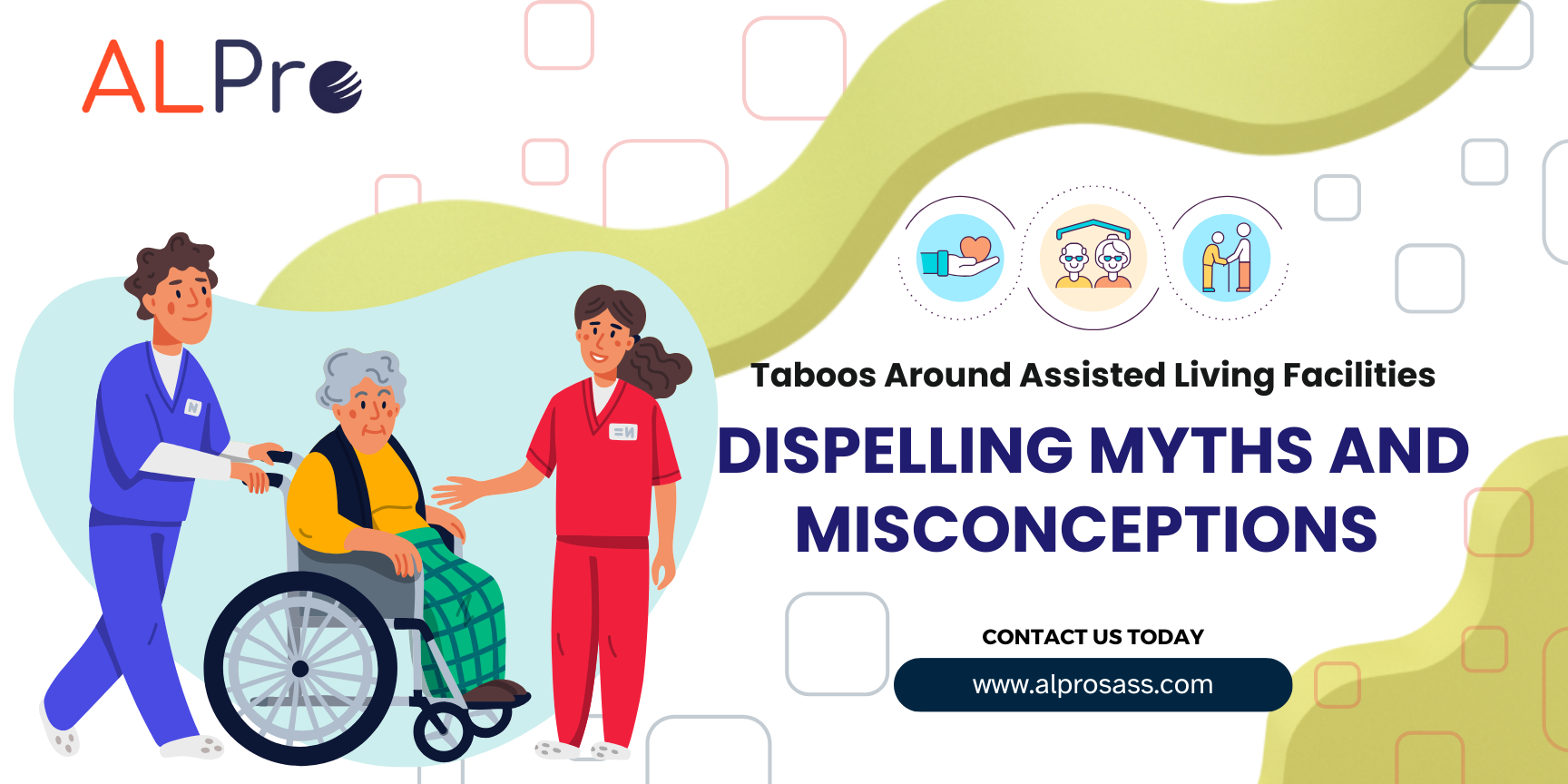Dispelling Myths and Misconceptions About Asssited Living

Assisted living facilities play a vital role in providing care and support for the elderly, yet misconceptions and taboos often surround them. These myths can create unnecessary fears and hesitations for families considering ALs for their loved ones. This blog aims to dispel some of the most common taboos and misconceptions about assisted living facilities, highlighting the benefits and realities of modern senior care.
Misconception 1: Loss of Independence Reality:Assisted living facilities are designed to promote and support independence while providing necessary assistance. Residents have their own living spaces and can engage in day-to-day activities at their own pace. The goal is to enhance quality of life by offering support with tasks that may be challenging, such as medication management or mobility, while encouraging residents to maintain their independence in areas where they are still capable.
Misconception 2: Assisted Living is the Same as a Nursing Home Reality:Assisted living facilities and nursing homes serve different purposes and cater to varying care needs. Assisted living is ideal for individuals who require assistance with daily activities but do not need the intensive medical care provided in nursing homes. Assisted living facilities focus on providing a supportive community environment, promoting social engagement, and enhancing the overall well-being of residents.
Misconception 3: Residents are Lonely and Isolated Reality:Modern assisted living facilities offer vibrant community environments with numerous social interaction and engagement opportunities. Residents can participate in various activities, including exercise classes, arts and crafts, music therapy, and group outings. These facilities foster community and belonging, helping residents build new friendships and stay connected.
Misconception 4: Poor Quality of Care Reality:Reputable assisted living facilities are committed to providing high-quality care tailored to the individual needs of each resident. Staff members are trained professionals dedicated to ensuring residents' health, safety, and well-being. Facilities are often subject to stringent regulations and regular inspections to ensure compliance with high standards of care.
Misconception 5: High Costs Without Value Reality:While the cost of assisted living can be significant, it often includes a wide range of services that provide substantial value. These services typically cover housing, meals, medical assistance, social activities, housekeeping, and transportation. For many families, the comprehensive care and peace of mind provided by assisted living facilities justify the cost.
Misconception 6: Families Abandoning Their Loved Ones Reality:Choosing assisted living is often a decision made out of love and concern for a family member's well-being. It can provide a safer, more supportive environment than possible at home. Families remain actively involved in their loved one's life, participating in care planning, visiting regularly, and staying informed about their well-being. Assisted living facilities encourage family involvement and maintain open lines of communication.
Misconception 7: One-Size-Fits-All Approach Reality:Assisted living facilities offer personalized care plans tailored to each resident's unique needs. These facilities strive to accommodate individual preferences and requirements, from dietary to activity choices and medical care. This personalized approach ensures that all the residents receive the support and care they need while maintaining their lifestyle choices.
Conclusion: Assisted living facilities provide a valuable service, offering a safe, supportive, and enriching environment for elderly individuals who need assistance with daily activities. By dispelling the common taboos and misconceptions, we can better understand the actual benefits and realities of assisted living. These facilities are not places of isolation or loss of independence but rather communities that enhance the quality of life for residents. Making an informed decision about assisted living involves looking beyond the myths and recognizing the positive impact these facilities can have on the lives of our loved ones.
